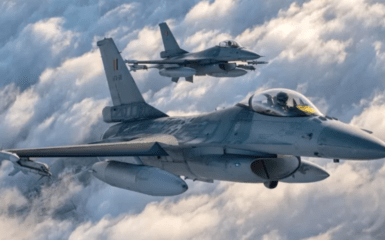In the last week, NATO fighter jets took off three times to intercept Russian planes over the territory of the Baltic region. In total, it was possible to intercept 10 Russian combat aircraft.
Points of attention
- Over the past week, NATO fighter jets intercepted Russian aircraft three times in the Baltic region.
- As a result, 10 Russian warplanes were intercepted, violating international air traffic regulations.
- The Baltic Air Policing (VAPB) mission ensures the protection of the skies over the Baltic and the surrounding airspace from potential threats.
- 17 NATO member countries took part in an air control mission over the Baltic Sea, deploying their fighter jets to ensure the security of the region.
What is known about the NATO interception of Russian planes
As reported in the Ministry of Defense of Lithuania, NATO fighter jets flew to identify the Russian Il-20 aircraft on August 13.
He was flying in international airspace from the Kaliningrad region of the Russian Federation and then returning without a flight plan and without an active radar repeater. Also, he did not maintain radio communication with the regional air traffic control center.
In addition, on August 14, the fighters had to fly again to identify two Russian TU-22M3, two SU-30, two SU-35 and two SU-27 aircraft.
TU-22M3, SU-30 and SU-35 aircraft flew in international airspace from the Russian mainland and back. Two SU-27 aircraft were circling in the airspace near the Kaliningrad region. They had no flight plan, no activated radar repeaters and no radio communication support.
On August 16, NATO fighter jets took off to identify the Russian Il-20 aircraft. He was flying from the Kaliningrad region to the Russian mainland.
Again, he did not communicate with the radio, he did not have a flight plan and the repeater was turned on.
Two Russian planes provoked the German and Swedish air forces
On August 3, German and Swedish fighter jets intercepted two Russian Su-30 aircraft over the Baltic Sea
Together with NATO partner Sweden, two German Eurofighters from the NATO VAPB mission took off for Alpha Scramble (interception operation — ed.). Two Russian Su-30s were identified. The Su pilots behaved unfriendly, but not aggressive.
Baltic Air Policing (VAPB) is a mission that provides protection of the skies above the Baltic Sea and the adjacent international airspace. Since April 2004, NATO and the member states of the Alliance have been monitoring the air in the region. Currently, seventeen members of the Alliance have deployed their fighter jets as part of an air control mission over the Baltic Sea.




